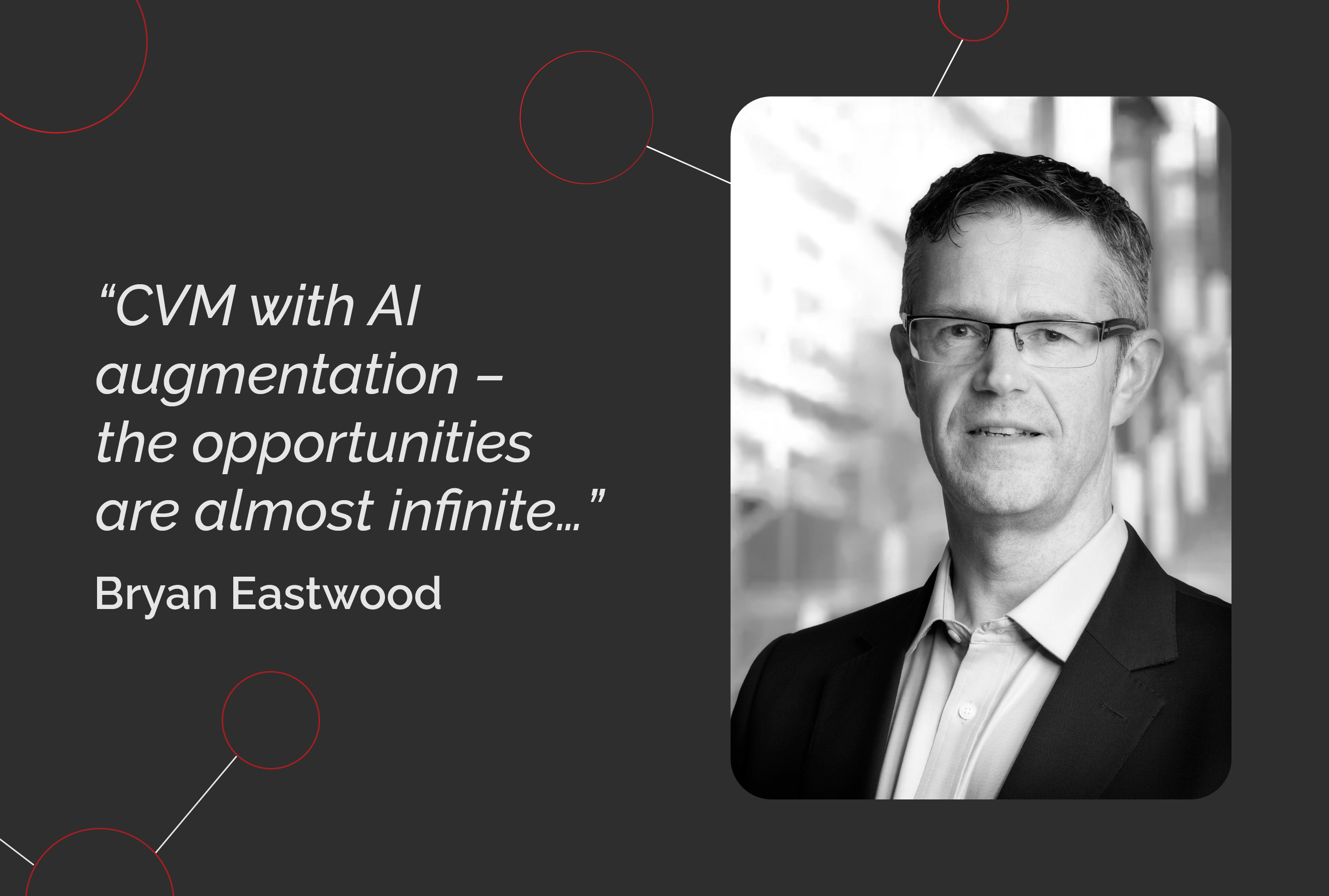Dr Bryan Eastwood, SourseAI’s UK-based Chief Customer Officer, sits down to discuss the transformative world of Customer Value Management (CVM), answering a few big questions and sharing insights on the value CVM affords to telcos today.
1. What is Customer Value Management (CVM)?
It very much does what it says on the tin! In short, Customer Value Management (CVM) means managing the value that is generated through serving customers. Every business, telco or not, does it in some way, shape or form.
But beyond the what, there is a far more important question that needs to be asked. That is, how can I better manage the value I generate from serving customers? In other words, how do I do CVM better?! Finding the answers to those questions is what telco leaders need to be prioritising.
2. How is CVM different from retention marketing?
Retention marketing isn’t different to CVM – the two are inextricably linked and related. They just deal with different parts of customer relationships. The best way to explain it is to think of retention marketing as a subset of CVM.
Let’s use Medicine/Healthcare as an example. If you think of Medicine/Healthcare as the umbrella discipline. Beneath that umbrella, there are many sub-specialisms – maternity, neurology, geriatrics, pathology, orthopedics, etcetera. That’s similar to the relationship that exists between CVM and retention marketing. Many different important specialities sitting under that overarching CVM umbrella. When done well, all of these elements work holistically together to deliver the strongest outcomes for the business and the customer.
3. What are the biggest challenges in managing CVM in the telco space, and how can an effectively planned and executed campaign strategy help?
Now this is the big question! There are never really any clear-cut black-or-white answers in CVM. At the most fundamental level, the idea of maximising value today vs creating satisfied lifetime customers and brand advocates is the biggest (and never-ending) challenge. There is oftentimes, at best, a healthy tension to be maintained here, which can be difficult. At worst, there is outright conflict and contradiction.
Who in business hasn’t encountered the age-old tension between ‘jam today’ vs ‘more jam tomorrow’, or trying to figure out whether it is better to pursue the maximum but high-risk revenue or lesser more assured revenue? In my mind, maximising the Customer Lifecycle Value is the ultimate goal of CVM. But convincing businesses that they’re better off forgoing a little profit today for enhanced profits next year can be a real challenge.
My own personal ‘CVM’ navigation system broadens the scope even further, aiming to triangulate a course to ensure there is always:
- A clear north star
- A holistic CVM strategy
- A rigorous integrated planning framework to underpin and evaluate progress
4. How has AI impacted CVM strategies?
AI has had a huge impact on CVM strategies, and the ongoing evolution in the space means it is continually unlocking more opportunities. This is particularly true for telcos, with the technology redefining the way businesses plan, analyse and manage strategies, campaigns, and customer relationships. Three examples of this:
- AI is always on, meaning strategies are continually self-adapting and self-optimising.
- AI is unfazed by data volume, velocity and/or variability as ‘axes of complexity’.
- AI has superior analytical abilities, thus providing teams with superior decision intelligence and augmentation capabilities.
5. When it comes to executing CVM strategies, what are some of the common pitfalls you see that could be costing businesses?
There are a couple of critical issues I see regularly. These can have huge ramifications on a business’s performance and result in a lot of extremely busy yet highly ineffective CVM practitioners.
Number one is when a business starts out but has not planned or implemented any rigorous evaluation processes. The second is when teams rush to direct marketing interventions while leaving structural flaws unaddressed in the operating model. If you are applying band-aids over symptoms rather than addressing the root causes, you’re always going to encounter trouble in the future.
6. When building out a CVM portfolio, what are the key components to ensure a well-rounded approach?
This is where my three-point CVM navigation system comes in handy. As I mentioned, it is so important to have that north star to follow – a clear and unwavering goal – along with a holistic strategy and a rigorous planning framework. But beyond that, you need data – that’s actually the most critical component. CVM starts with data and finishes with data! Data informs the hypothesis creation, data informs hypothesis validation, data guides intervention, and data measures any and all post-intervention outcomes!
Strategic CVM thinking has a start, but I would say has no distinct endpoint. A CVM sub-strategy will for sure reach a point of diminished returns – though with AI augmentation, knowing when to shift focus, expand your strategies or go more granular can be more clearly understood. The opportunities are almost infinite and only limited by commercial/marketing (and AI) creativity, bandwidth and resolution.
7. How can a business craft a CVM strategy that will allow it to stand out from competitors?
Truth be told, it’s not really the role of CVM to help a business stand out. In my opinion, the steps needed to really stand out should start well before CVM. For example, if your overall business strategy is a value-play (being the cheapest operator) then I honestly can’t imagine significant stand-out qualities that a customer or casual observer would see as a point of difference. A CVM strategy will, however, be the approach that accumulates from a wide gamut of marginal gains and allows the operator to survive and thrive as a budget no-frills provider. Yes, there will be marginally higher acquisition, lower churn, and higher spend compounded over time, and all of these yield substantive advantages. But rarely will this be the one thing that enables a brand to overtly “stand out”. At the other end of the spectrum, CVM can positively impact the execution and refinement of highly differentiated strategies.
8. Can you speak more to the importance of testing and measuring marketing efforts, and defining what ‘success’ looks like?
Testing and measuring marketing efforts are an absolute prerequisite. It’s fundamental to success and one thing I deem non-negotiable. After all, CVM is a data-driven strategy built on ‘test and learn’ and scientific enquiry. As Mark Jeffries’ states in Data-Driven Marketing, “Setting up for evaluation is the 1% of effort that will yield 99% of value”.
9. What kind of benefits can I expect from CVM in telco?
Where do I start?! If I had the time, I could go on for hours about the value CVM offers telcos. But I’ll keep it brief and instead give you my ‘11 reasons to prioritise CVM’ elevator pitch:
- More acquisitions – and higher quality ones too.
- Lower churn due to a greater focus on value rather than volume.
- Higher ARPU and AMPU.
- More product holdings.
- Higher NPS.
- Higher CLV.
- Predictability of performance and management interventions.
- Greater business resilience with improved revenue and margin security.
- Happier, more satisfied customers who stay longer, spend more and advocate your brand to friends and family.
- More empowered organisation and employees.
Dr Bryan Eastwood, PhD, is a senior commercial professional with full marketing mix exposure and extensive experience working with global blue chips and private equity-backed startups. He specialises in customer-centric, data-driven strategies that optimise customer journeys and deliver subscriber, revenue, margin, and loyalty growth. Connect with Bryan here.
Ready to optimise your CVM strategies by harnessing the power of AI? Get in touch with our team today |


